by Spreck | Feb 16, 2025 | Uncategorized
The National Park Service has long faced challenges retaining competent staff to run Yosemite. But recent actions taken by the “department” of Government Efficiency (DOGE) have wrought havoc threatening not only NPS staff but also visitors, Aramark (Yosemite’s concessionaire) employees and the park itself. It’s chaos, as the San Francisco Chronicle explains.
DOGE is a new creature of the federal government, not a cabinet-level Department created by Congress (e.g. Interior, Defense, State). It is an organization created by a temporary government contract through Executive Order.
DOGE’s nationwide hiring freeze is the bluntest of all possible instruments. Yosemite is but one of many pawns nationwide as DOGE seeks to eliminate waste in government spending.
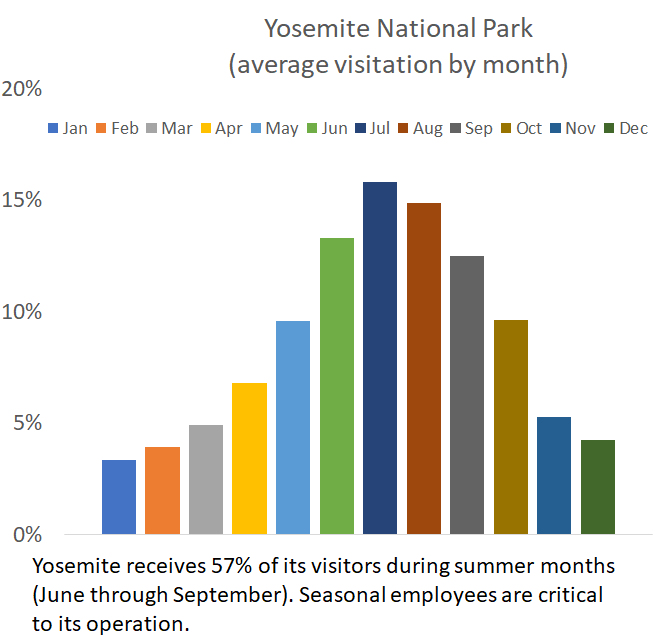
It’s essential to note that Yosemite, like many national parks is highly dependent on seasonal hires to manage summertime crowds. It simply cannot operate without them. Permanent and seasonal rangers are needed to manage traffic, to clean bathrooms, to protect meadows, ensure visitor safety etc. (Imagine, for example, 20,000 people in Yosemite on a summer’s day without functional restrooms!)
Moreover, there’s a human cost. Morale may be at an all time low in Yosemite. Restore Hetch Hetchy has been often critical of the National Park Service for neglecting the Hetch Hetchy area, but, as a whole, rangers are dedicated to protecting our precious parks so we can fully enjoy and appreciate them. Rangers need and deserve the respect of the public and our nation’s leaders alike.
We are all against waste. But DOGE cannot be permitted to take ignorant unilateral action from thousands of miles away without regard to what makes Yosemite one of America’s flagship national parks.
We hope and pray that cooler heads will prevail and will take the time to assess the effectiveness and utility of all government institutions. Yosemite and all our national parks belong to all Americans. We cannot allow them to be political pawns.

by Spreck | Feb 8, 2025 | Uncategorized
Restore Hetch Hetchy wrote to Congressman McClintock and his cosponsors last week, encouraging them to continue to pursue legislation to improve access and recreation at Hetch Hetchy. At the same time, McClintock added initial language to the Yosemite National Park Equal Access and Fairness Act (H.R. 177), the bill he introduced a month ago.

The current text of the bill is posted on Congress’ website.
Our letter, with its supporting documents, is posted on the Restore Hetch Hetchy website.
Discussion of this proposed legislation comes at a time when the National Park Service has decided to pause its plans to implement a long-term reservation system in the park while awaiting review by the new administration in Washington D.C.
We have asked the National Park Service to consider the Hetch Hetchy entrance to Yosemite differently from other park entrances in its reservations system. After all the Hetch Hetchy entrance is geographically separated from the others and has a different pattern of visitor use. Note also that the reservation system has never applied to park visitors who use public transportation, but that will not be an option for visitors to Hetch Hetchy – the only park entrance not served by the Yosemite Area Rapid Transit System.
Restore Hetch Hetchy remains focused on Hetch Hetchy, so we have not taken a position on the reservation system in other parts of Yosemite.
The National Park Service has long neglected the visitor experience at Hetch Hetchy. The National Park Service and/or Department of the Interior could and should make many proposed improvements without the need for legislation. A legislative solution, however, would be the best way to guarantee improvements for the long term.

California has 38 reservoirs which hold more than 200,000 acre-feet of water. Of these, Hetch Hetchy Reservoir is the only one which does not allow boating and fishing. Photo: Joe Braun
So we are encouraging Congressman McClintock and others to pursue a legislative approach. The devil is in the details, of course, and legislation must protect the park and its wildlife as it makes additional recreational opportunities available for visitors.
Camping, boating and fishing etc. at Hetch Hetchy would all be popular activities. More visitors would come to Hetch Hetchy, marvel at its towering granite walls, learn its history and support the campaign for its restoration. So while restoration is our ultimate goal, we are also excited about improving access and recreation even while the dam is in place.

by Spreck | Feb 3, 2025 | Uncategorized
Leadership changes are afoot within the Department of Interior and the National Park Service. Staff at either agency has the ability to effect long overdue change at Hetch Hetchy under existing law, so we will be in touch with both during coming weeks and months.
Former North Dakota Governor Doug Burgum was confirmed as Secretary of Interior last Thursday with 79 out of 100 votes in the Senate.
The Department of Interior oversees numerous agencies, including the National Park Service. Burgum’s confirmation hearing focused primarily on his support for energy development on public lands with scant mention of of national parks. We have written Burgum, as we have previous Secretaries, explaining the important opportunity that we have to improve the visitor experience at Hetch Hetchy. We hope Burgum and/or his deputies will be interested.
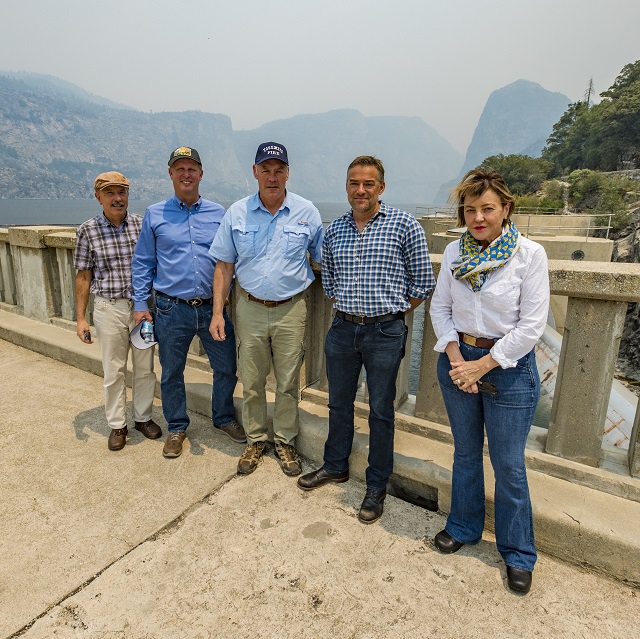
Secretary Ryan Zinke (center) came to Hetch Hetchy on a smoky day in 2018, and met with Restore Hetch Hetchy Board Member Mark Palley (left), ED Spreck Rosekrans, and Board Members Mark Cederborg (second from right) and Virginia Johannessen. Photos by Sherman Hogue/DOI
As is customary after a change of the Presidency, National Park Service Director Chuck Sams has resigned. The role is currently filled by “acting” Director Jessica Bowron. (The NPS Director is a position that also requires Senate confirmation, which never occurred direct Trump’s first presidency. The last president to retain a NPS Director for a full term was Richard Nixon).
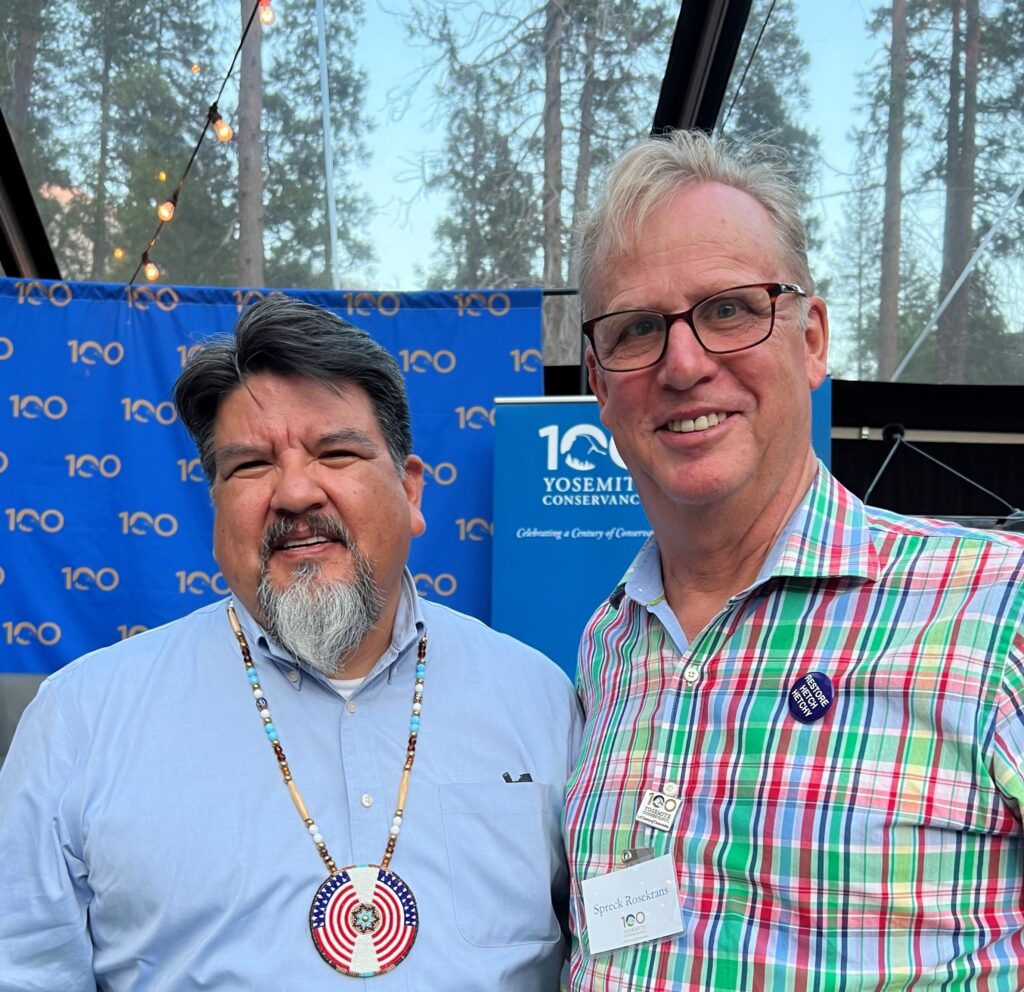
NPS Director Chuck Sams with RHH’s Spreck Rosekrans in 2023 at the Yosemite Conservancy’s Centennial soiree.
In addition, Yosemite Superintendent Cicely Muldoon has announced her retirement. We have had several cordial meetings with Muldoon and other Yosemite staff over the last several years. We have made progress convincing staff at Yosemite to enhance access to Hetch Hetchy, but much more needs to be done. We look forward to meeting and working with Muldoon’s not-yet-named successor.
Much can be done administratively to improve access and recreation at Hetch Hetchy. We will work with personnel at all levels to achieve improvements for park visitors that are long overdue. We will keep you posted.
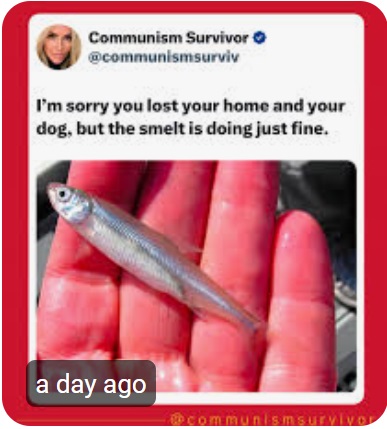
by Spreck | Jan 11, 2025 | Uncategorized
As devastating fires in Los Angeles continue to burn, too many politicians and keyboard warriors are making irresponsible assertions about the causes of the fires and the challenges of fighting them. It’s far from the first time that such nonsense has been used to promote political agendas – the 1906 (earthquake and) fire that devastated San Francisco was used to justify damming Hetch Hetchy Valley in Yosemite National Park.
Some of the blame for the fires that have obliterated Pacific Palisades and Altadena has fallen on the endangered Delta smelt. It’s true that exports of water from northern California to farms and cities in the south have been reduced at times to protect smelt and other fisheries. Large reservoirs in southern California, however, have plentiful supplies; there is no regional lack of water to fight the fires. (This Wall Street Journal video explains why some fire hydrants did run dry.)

One of the least obnoxious, but still wholly inaccurate, memes blaming the Delta smelt for fire damage.
A century ago, the lack of water available to fight the devastating fire that erupted following the San Francisco earthquake on April 18,1906 was used to justify damming Hetch Hetchy Valley in Yosemite National Park. (Again, local reservoirs had plentiful supplies, but water mains in the city were severed by the earthquake.)

With water mains broken throughout the city, there was little firefighters could do to quell the inferno.
For example, Senator Henry Myers (Montana) read the following before the U.S. Senate on December 1, 1913 as it was debating the Raker Act:

Senator Henry Myers (MT)
“Their fair city has been decimated by earthquake and fire and it has been reported on credible authority that one of the greatest causes of the devastation to that fair city was lack of adequate water supply – they very thing they are trying to get today at a cost of millions of dollars to the taxpayers.”
The broken water mains were operated by the Spring Valley Water Company, a private enterprise that had long frustrated City officials. Had a public water system been in place, there is no indication the pipes would have better endured the powerful earthquake. For more information about how the proposal to dam Hetch Hetchy came to fruition after having been rejected twice by the federal government and abandoned by the San Francisco Board of Supervisors, see Hetch Hetchy, the Earthquake and the Boodle.
There are very hard lessons to be learned from yet another year of terrible fires. What could and should have been done differently and more importantly, what must we do moving forward. Blaming fires on red herrings such as Delta smelt won’t help the thoughtful planning that is necessary to help us avoid these catastrophes.
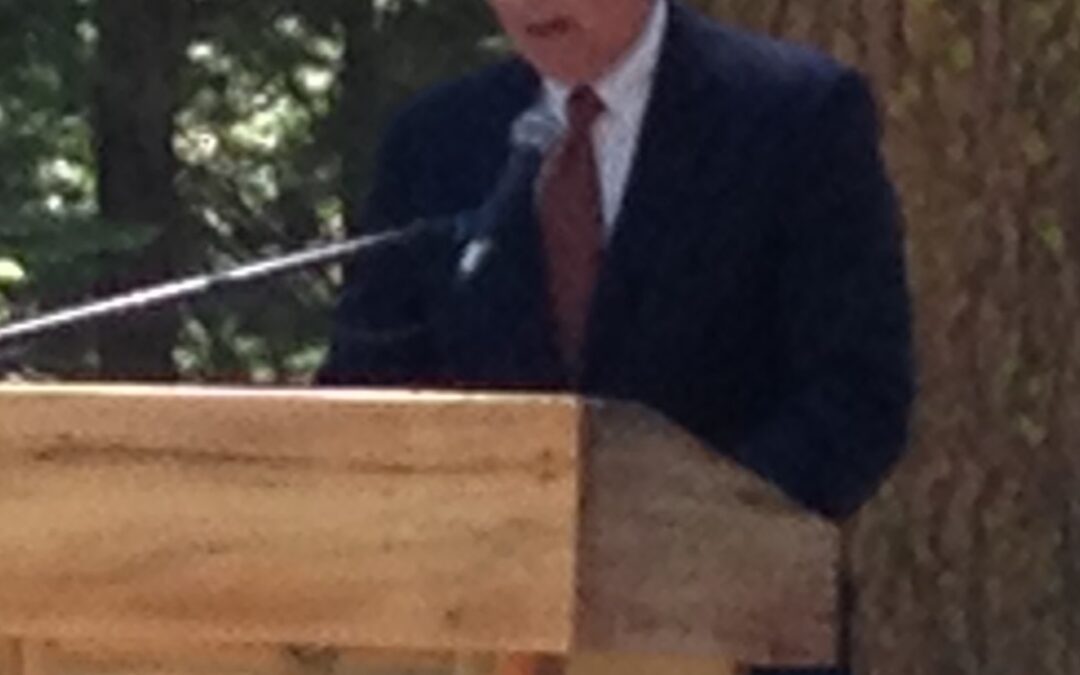
by Spreck | Jan 11, 2025 | Uncategorized
It’s always great to see elected officials take an interest in improving the situation at Hetch Hetchy.
Congressman Tom McClintock, whose district includes Yosemite, has introduced H.R. 177, legislation intended to improve access and recreation at Hetch Hetchy as well as to increase the fees that San Francisco pays for storing water in a national park.
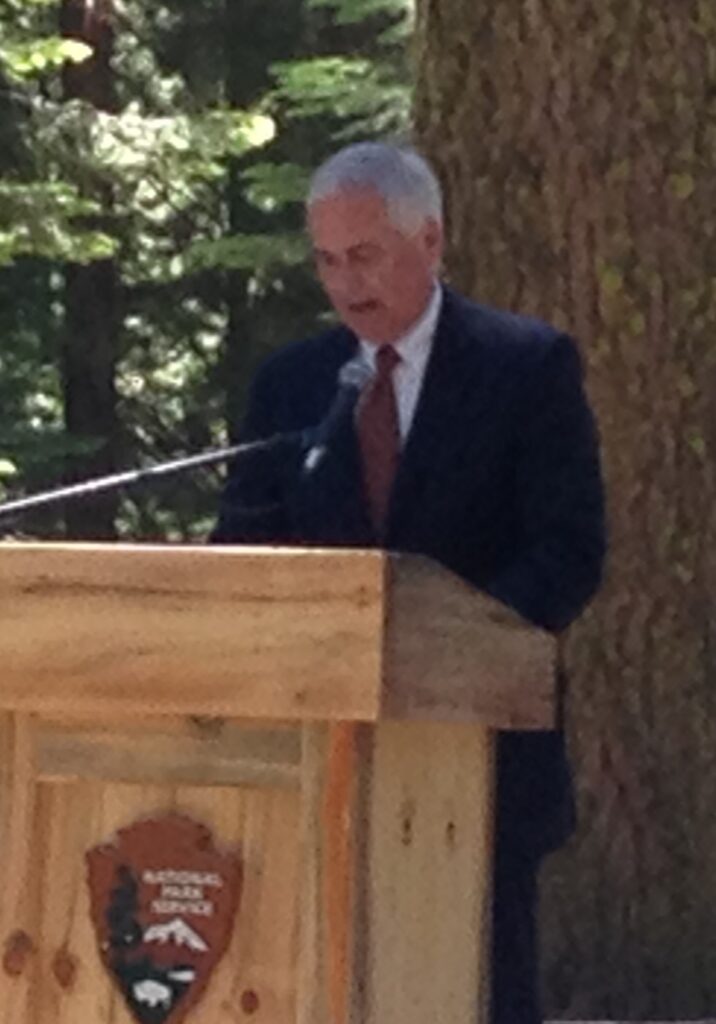
The bill is cosponsored by Reps. David Valadao, Ken Calvert and Doug LaMalfa. At this point there is no text associated with the proposal. Note that Rep. Connie Conway introduced a similar bill, the Yosemite National Park Equal Access and Fairness Act, in 2022, which Rep. McClintock reintroduced in 2023.
Will the third time be a charm?
The mandate to improving access at Hetch Hetchy, even with the dam in place, was explored in Keeping Promises: Providing Public Access to Hetch Hetchy Valley, Yosemite National Park (Restore Hetch Hetchy, 2021). Since that time, we have been working with the National Park Service to improve access, including fishing, boating and camping – activities expected by Congress when it passed the Raker Act in 1913 but which have never been made available. The NPS has been sympathetic to our requests but reluctant to make changes.
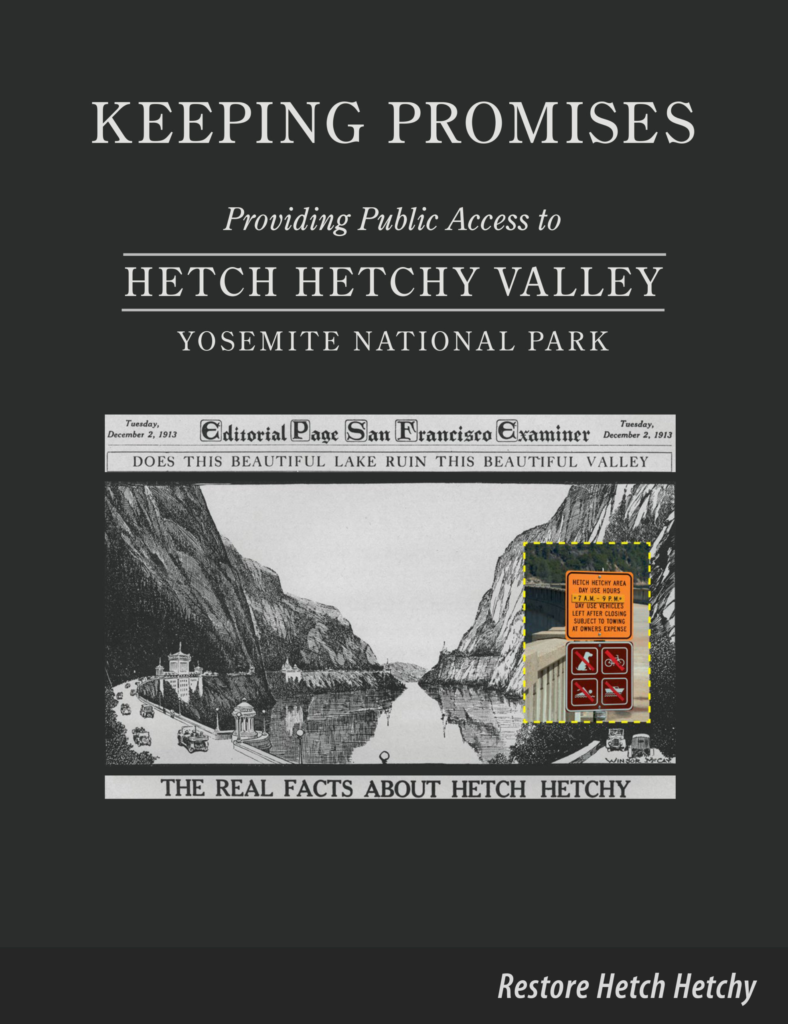
So, we are pleased to see that legislation is again being considered. Any final endorsement will depend on the details of the legislation.
We have been in contact with Rep. McClintock’s staff on issues of improved recreation and our shared view that the visitor experience at Hetch Hetchy warrants improvement. We do not, however, share common ground on the ultimate restoration of the valley. Rep. McClintock remains opposed to restoration, as far as we know, but we hope he will keep an open mind if a fair and cost effective plan to ensure no loss of water and power is put before him.
It’s far easier to introduce legislation than to pass it. But we do hope H.R. 177 will move forward in the current Congressional session.
We’ll keep you posted.













